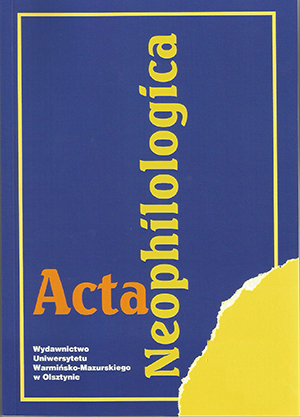Dyskurs wokół konwersji unitów na północnym Podlasiu w latach 20. i 30. XIX wieku
DISCOURSE OVER THE CONVERSION OF THE UNIATES IN NORTHERN PODLASIE IN THE 1820S AND 1830S
Author(s): Irena MatusSubject(s): History, Language and Literature Studies, Cultural history, Local History / Microhistory, Social history, Modern Age
Published by: Wydawnictwo Uniwersytetu Warmińsko-Mazurskiego w Olsztynie
Keywords: The Uniates; Latin Catholics; conversions
Summary/Abstract: The conversion of the Uniates to the Latin Catholic rite occurred with the introduction of theUnion Church. Initially, it concerned Russian nobility, which thus obtained equality and ennoblement.Over time, also peasants inhabiting mainly the borderland area converted. One such example wasnorthern Podlasie. The rite was changed as a result of marriages, Latinization and pressure from theclergy and nobility. After the Synod of Zamość, the difference between the two Catholic rites wasblurred, thus the Uniates occasionally baptized their children in churches. In such a situation, theyrecorded them in parish registers and they practiced Roman Catholicism. In 1837, the cancellationof previous metric entries was instructed and moving to the parish registers of the Uniates, whichwas impossible in practice. Beginning in 1834, when, as a result of changes made in the temples,suggestions to abolish the Uniate rite became more pronounced and more frequent, the activityof Latin clergy intensified, leading to conversions. As early as 1807, the Senate forbadethe conversions of the Uniates to the Latin Church and in 1810 the converts were ordered to return tothe previous rite, yet it concerned only the Uniate priests. This was not complied in practice. In 1835,the Uniates were categorically forbidden to convert to the Latin rite, but this did not stop conversions.In northern Podlasie, conversions intensified in the early 1830s and ranged from approximately26.1 percent in the parish of Drohiczyn to just a few people in other parishes. Conversions did notoccur in the ethnically homogenous areas. Before 1835, 983 people abandoned the Uniate rite inthe district of Bialystok, 712 at the deanery of Bielsk and 271 people at the deanery of Bialystok.However, these data were not complete. The actions concerning the conversions of the Uniate priestsand deans, supported by civil authorities, did not bring about the intended results. The decisions takenby the church and civil authorities were not respected. None of the measures were enforced on theconverts, except for verbal incitement. It was finally decided that if the conversion was made before1839, the return was not necessary. On the other hand, attempts to convert Orthodox Christians met with serious consequences. After the dissolution of the Union, the relations between the Latinand Orthodox clergy (formerly the Uniate) deteriorated, and the struggle to gain parishioners led toconflicts and mutual claims, lasting for a long time. After 1870 this problem virtually disappeared.
Journal: Acta Neophilologica
- Issue Year: 2/2015
- Issue No: XVII
- Page Range: 141-156
- Page Count: 16
- Language: Polish

